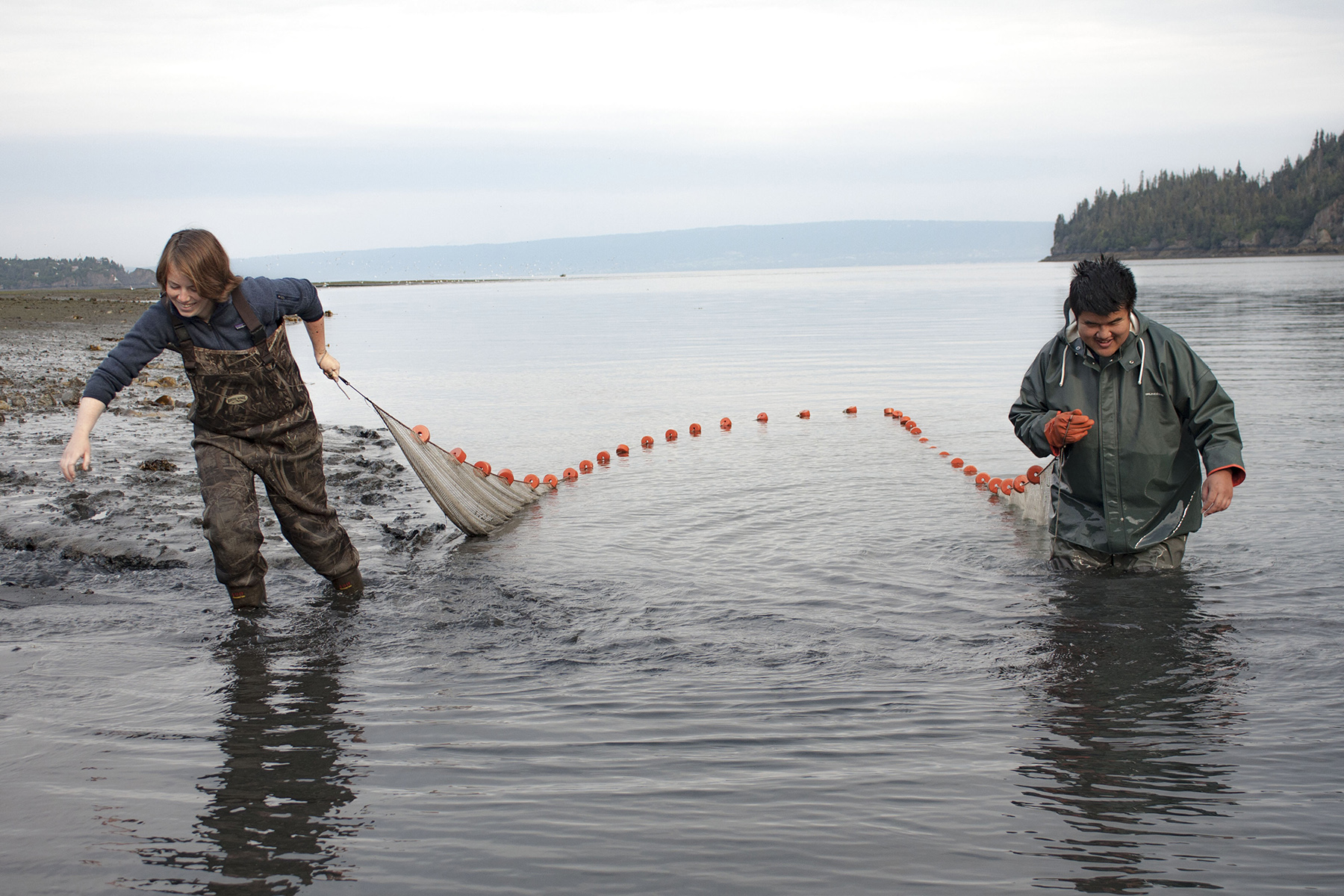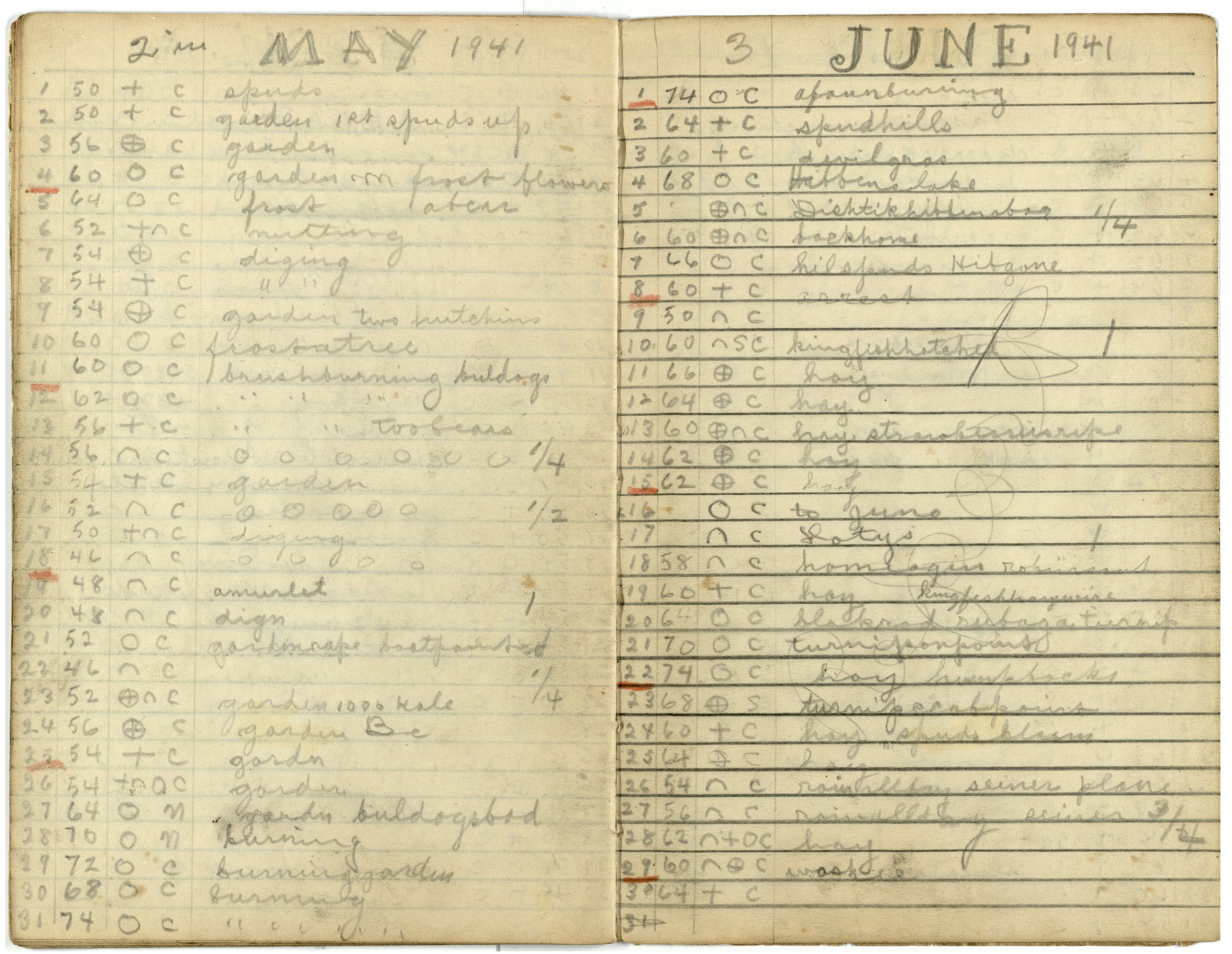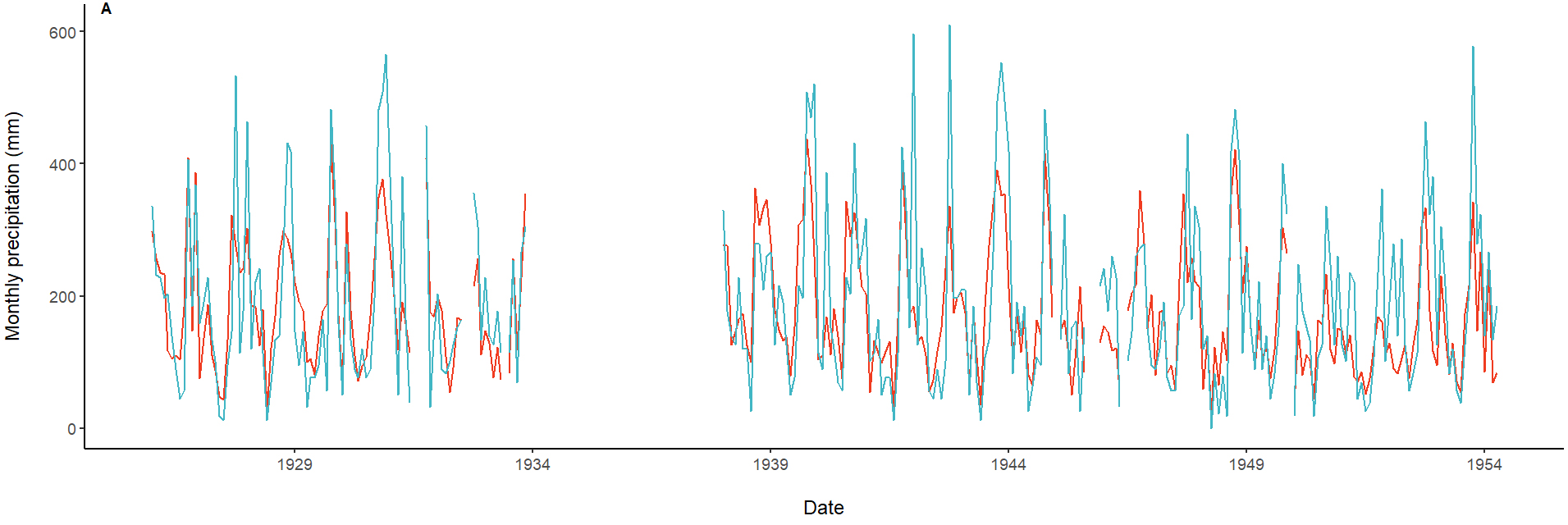UAF undergraduate uses novel data source to test climate model
Tom Moran
907-474-5581
Sept. 30, 2021

Emily Williamson and fellow UAF undergraduate Brian Zhang conduct a beach seine in Halibut Cove off Kachemak Bay in 2019. In addition to her climate model studies, Williamson has also conducted field research in the Kachemak Bay intertidal and lab research into phytoplankton, the latter of which formed the basis for her senior thesis.
A University of Alaska Fairbanks undergraduate reached back almost a century to help validate some modern climate modeling software.
Emily Williamson, a senior ocean sciences major in the College of Fisheries and Ocean Sciences, is lead author on a recent paper published in the PeerJ journal that evaluates the accuracy of ClimateNA, which is a climate-modeling software. The paper compares the ClimateNA results to temperature and precipitation data recorded from 1926-1954 by Allen Hasselborg, a homesteader on Admiralty Island in Southeast Alaska.
ClimateNA is a climate downscaling model, which means it uses data from weather stations — in this case, stations in places like Juneau and Sitka, far from Hasselborg’s homestead — and combines them with circulation patterns to estimate climate data for specific points on the map. Hasselborg’s journals presented an opportunity for Williamson and her co-author, UAF Ph.D. candidate Chris Sergeant, to see how accurately the model could simulate historic climate conditions for a given, isolated spot in the Alaska panhandle.
“If you’re using the ClimateNA model for a project in a really remote area, you really have no way of knowing how accurate the model is because there are not a lot of opportunities to test it against long-term, consistent weather data,” explained Williamson. “It was a rare opportunity to do that, because the area is so remote and it’s historical data from a pretty long time ago.”

Example pages from Allen Hasselborg’s weather journals.
Sergeant came up with the testing idea after taking a packrafting and hiking trip across Admiralty Island that passed near the Mole Harbor homestead of Hasselborg, a renowned bear hunter who had also collected many Alaska fauna specimens for scientists. When Sergeant learned that Hasselborg had kept meticulous daily journals of precipitation and temperature, Sergeant hatched the idea of using the data to model historic streamflow in the Mole River watershed — and recruited Williamson to help.
“I was a fisheries student at the time, and it seemed like it would be a good experience to learn about models,” Williamson said. “And I’m also really interested in natural history, so it seemed like a cool opportunity.”
Williamson received a travel award from the Alaska National Science Foundation Established Program to Stimulate Competitive Research (Alaska NSF EPSCoR) to fly to Juneau in 2019, where she scanned the journals page by page from their home at the Alaska State Library. Then she transcribed them all back in Fairbanks.
“There were around 279 usable months of data, so it was a really long time period, 1926 to the ’50s, and the author was pretty consistent,” she said. “It took quite a long time to transcribe it all.”
She and Sergeant ultimately decided it would be more fruitful to do a direct comparison of the temperature and precipitation data than to generate a streamflow model (though they did that as well). The pair used ClimateNA to model temperature and precipitation for the period of the journals and location of the homestead and compared the findings. They found a high correlation between the modeled and observed measurements: On a scale on which 0 represents no correlation and 1 represents perfect positive correlation, monthly precipitation scored 0.74 and the monthly mean of the maximum daily air temperature scored 0.98. The modeled streamflow showed more moderate correlation of 0.55.

Monthly precipitation estimated by ClimateNA (orange) compared with monthly precipitation measured by Hasselborg (blue).
Williamson said the correlations tended to be smaller in years of anomalously high or low temperature or precipitation, but the results largely validated ClimateNA.
“In general the trends are the same, they increase at the same time, they decrease at the same time,” she said. “And a lot of times the numbers are really similar.”
By helping validate ClimateNA’s estimates, Williamson said the results could aid researchers studying remote sites.
“It’s showing that you can use downscaled climate data to make relatively accurate historical time series for anywhere in Alaska, no matter how remote it is,” she said. “Even if your study site isn’t near a weather station, you can still have historical data for a study site if you want to do a project there, and you can compare that to current data and you can draw some conclusions about climate change.”
Williamson and Sergeant’s article, “Independent validation of downscaled climate estimates from a coastal Alaska watershed using local historical weather journals,” was published in PeerJ on Sept. 10.
ADDITIONAL CONTACTS: Emily Williamson, erwilliamson3@alaska.edu, 760-224-1518; Chris Sergeant, chris.sergeant@gmail.com.


